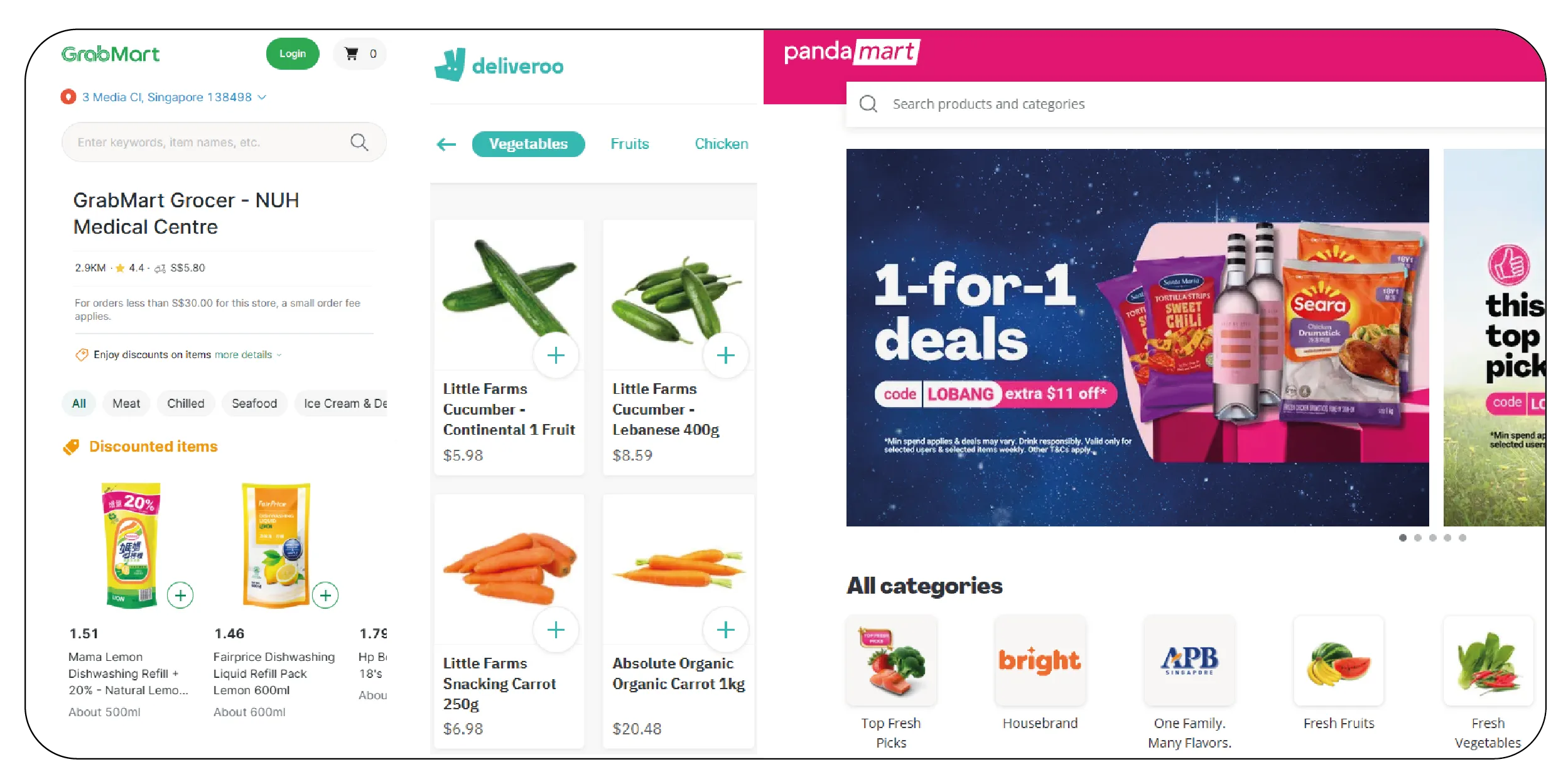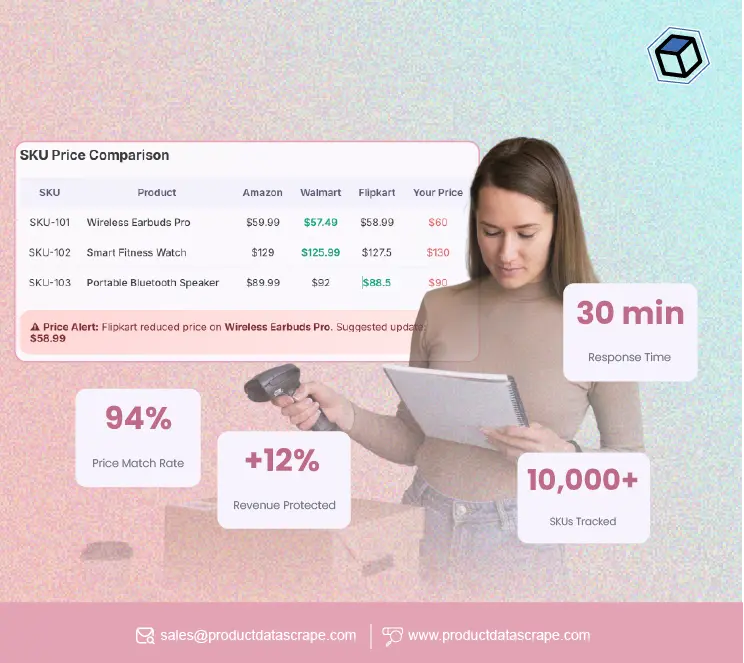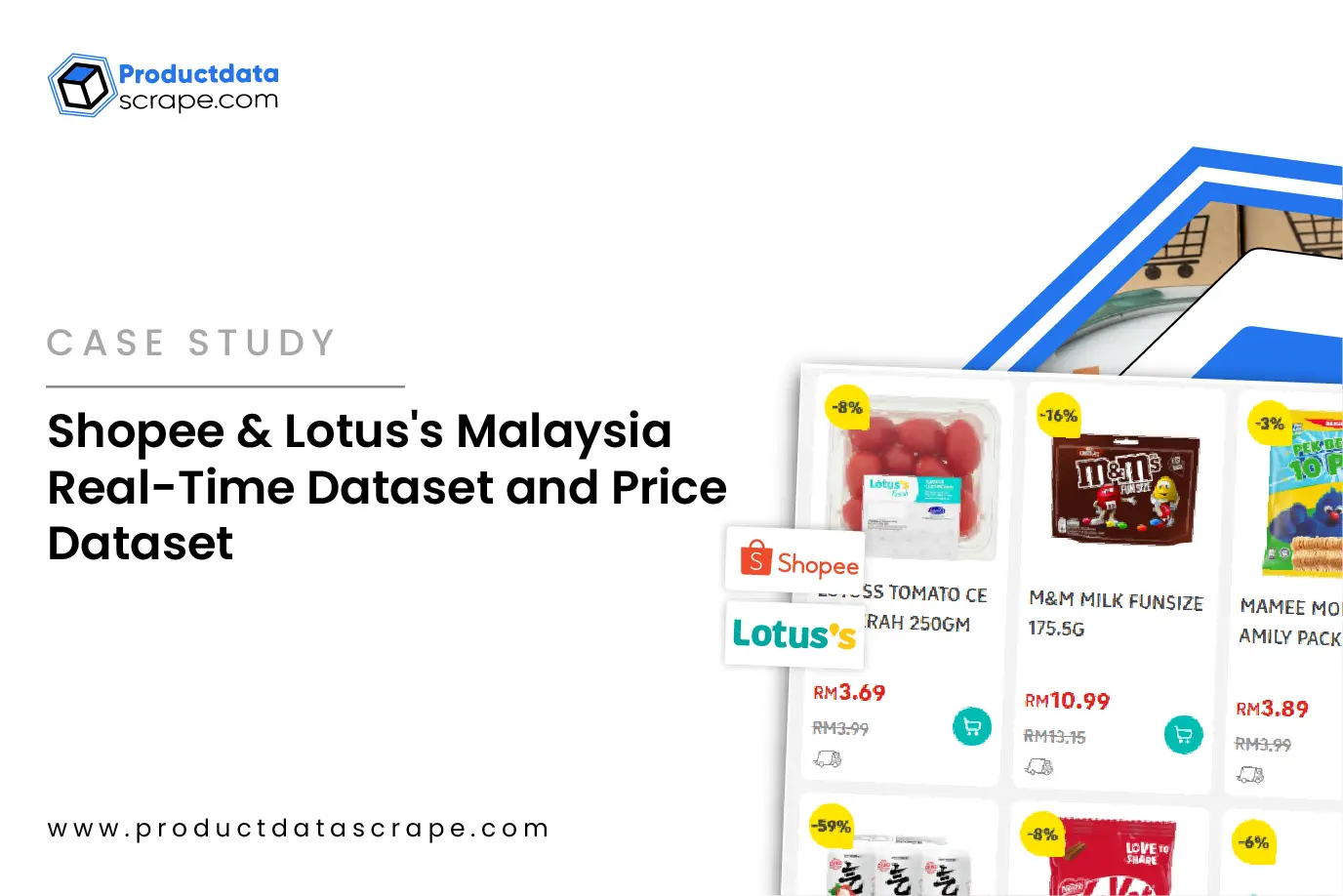
Introduction
The Singapore Q-commerce market has experienced rapid growth over the past five years, driven by
consumer demand for faster deliveries, convenience, and competitive pricing. Understanding the
dynamics of leading hyperlocal delivery platforms is crucial for businesses aiming to optimize
operations and pricing strategies. This research report focuses on the Singapore Hyperlocal
Delivery Strategy: foodpanda, Grab & Deliveroo, examining market share, pricing, and operational
trends from 2020 to 2025.
Market Overview and Growth Trends (2020–2025)
Between 2020 and 2025, Singapore’s hyperlocal delivery market grew at an average CAGR of 18%,
fueled by Q-commerce adoption and pandemic-driven consumer behavior changes. Platform
penetration increased across urban districts, with foodpanda, Grab, and Deliveroo capturing
distinct market segments.
| Year |
foodpanda Market Share (%) |
Grab Market Share (%) |
Deliveroo Market Share (%) |
Total Orders (Million) |
| 2020 |
38 |
32 |
30 |
15 |
| 2021 |
39 |
33 |
28 |
20 |
| 2022 |
40 |
32 |
28 |
25 |
| 2023 |
41 |
31 |
28 |
32 |
| 2024 |
42 |
30 |
28 |
40 |
| 2025 |
43 |
29 |
28 |
48 |
Analysis of this data, derived using Scrape Singapore Q-Commerce Trends,
reveals foodpanda steadily gaining share through promotional offers and platform partnerships.
Deliveroo retained strong footholds in premium dining and niche food segments, while Grab
capitalized on bundled grocery and delivery services.
Pricing Strategies and Insights
Pricing competitiveness remains a critical differentiator for hyperlocal delivery players. From
2020 to 2025, platform pricing trends revealed dynamic promotional cycles and adaptive delivery
fees. Using Competitor Price Intelligence for Singapore, analysts observed that discount
strategies and surge pricing directly impacted order volumes and customer retention.
Average delivery fee (SGD) and promotional discount trends across platforms:
| Year |
foodpanda Avg Delivery Fee |
Grab Avg Delivery Fee |
Deliveroo Avg Delivery Fee |
Avg Promo Discount (%) |
| 2020 |
3.20 |
3.10 |
3.50 |
10 |
| 2021 |
3.10 |
3.05 |
3.40 |
12 |
| 2022 |
3.05 |
3.00 |
3.35 |
13 |
| 2023 |
3.00 |
2.95 |
3.30 |
15 |
| 2024 |
2.95 |
2.90 |
3.25 |
16 |
| 2025 |
2.90 |
2.85 |
3.20 |
17 |
Our data, sourced via Scrape foodpanda, Grab & Deliveroo Delivery Data in Singapore, highlights
that foodpanda’s consistent discounting strategy contributed to incremental market share growth,
while Deliveroo maintained premium pricing supported by fast delivery and exclusive
partnerships.
Operational Performance Analysis
Operational efficiency, including average delivery times and fulfillment rates, directly
influences customer satisfaction. Using Web Scraping foodpanda Quick Commerce Data and Deliveroo
Quick Commerce Data Scraping API, the platforms’ operational KPIs were monitored from 2020–2025.
| Year |
Avg Delivery Time foodpanda (mins) |
Avg Delivery Time Grab (mins) |
Avg Delivery Time Deliveroo (mins) |
Fulfillment Rate (%) |
| 2020 |
35 |
37 |
33 |
88 |
| 2021 |
34 |
36 |
32 |
89 |
| 2022 |
33 |
35 |
32 |
90 |
| 2023 |
32 |
34 |
31 |
91 |
| 2024 |
31 |
33 |
30 |
92 |
| 2025 |
30 |
32 |
30 |
93 |
Our analysis shows that improved route optimization, predictive demand forecasting, and
automated dispatch systems contributed to reducing delivery times and increasing fulfillment
rates. These insights were extracted from Singapore Grocery Delivery Platform Dataset.
Consumer Behavior and Order Patterns
Consumer preferences in Singapore’s hyperlocal delivery segment have shifted towards grocery
items, bundle offers, and scheduled deliveries. Data collected through Scrape GrabMart Prices
Data indicates a rising demand for convenience, with grocery and FMCG items making up an
increasing proportion of orders.
| Category |
2020 Orders (%) |
2025 Orders (%) |
| Food & Beverage |
60 |
50 |
| Grocery & FMCG |
30 |
40 |
| Others |
10 |
10 |
The adoption of predictive analytics and real-time pricing insights from Grocery store dataset
enabled platforms to adjust promotions, delivery slots, and inventory allocation to match
customer behavior.
Technology and Data Integration

All three platforms leveraged advanced data integration and analytics solutions to improve
operational performance. Using Web Scraping Deliveroo Quick Commerce Data , combined with
automated dashboards, companies could track competitor promotions, inventory, and delivery
metrics efficiently.
Additionally, Quick Commerce Grocery & FMCG Data Scraping facilitated structured reporting for
predictive decision-making. Platforms could continuously refine pricing strategies, optimize
stock levels, and enhance consumer satisfaction, creating a strong competitive edge.
Web Data Intelligence API was also employed for seamless integration of datasets into analytics
tools, supporting scenario analysis, demand forecasting, and strategic planning.
Competitive Insights and Recommendations

By continuously monitoring competitor platforms and leveraging Web Scraping Singapore Delivery
Apps, businesses can identify emerging trends, pricing anomalies, and operational bottlenecks.
Scrape foodpanda, Grab & Deliveroo Delivery Data in Singapore provides granular visibility into
promotions, delivery times, and order volumes.
The key recommendations for businesses entering or expanding in Singapore’s hyperlocal delivery
market include maintaining dynamic pricing, leveraging predictive analytics for inventory
management, and integrating automated scraping pipelines for real-time competitor insights.
These strategies enable faster decision-making, enhanced operational efficiency, and improved
customer retention.
Product Data Scrape offers comprehensive solutions for extracting, cleaning, and analyzing
hyperlocal delivery data. By leveraging our expertise in Extract Singapore Hyperlocal Delivery
Data, businesses can access structured, accurate datasets that inform pricing, operations, and
marketing strategies. Our custom scraping solutions allow companies to Scrape Singapore
Q-Commerce Trends, track promotions, and monitor competitor platforms efficiently.
We provide end-to-end services, including Scrape GrabMart Prices Data , Web Scraping foodpanda
Quick Commerce Data, and Deliveroo Quick Commerce Data Scraping API , ensuring access to
actionable insights across multiple platforms. Our Grocery store dataset and Singapore Grocery
Delivery Platform Dataset support predictive analytics, campaign planning, and operational
optimization. With automated data pipelines, clients can respond in real-time to market changes,
improve decision-making speed by up to 50%, and gain a competitive advantage in Singapore’s
dynamic hyperlocal delivery ecosystem.
Conclusion
The Singapore Hyperlocal Delivery Strategy: foodpanda, Grab & Deliveroo demonstrates the value
of real-time data in shaping operational efficiency, pricing strategies, and market positioning.
By leveraging insights from web scraping, predictive analytics, and automated dashboards,
businesses can make faster, smarter decisions, enhance customer satisfaction, and increase
market share.
Product Data Scrape empowers retailers and Q-commerce players to harness these insights through
comprehensive, real-time data solutions. By integrating custom datasets, competitor
intelligence, and hyperlocal delivery metrics, businesses can optimize pricing, improve
operational workflows, and drive strategic growth.
Unlock actionable insights today with Product Data Scrape and stay ahead in Singapore’s
competitive hyperlocal delivery market.




















.webp)
-01.webp)
.webp)

.webp)